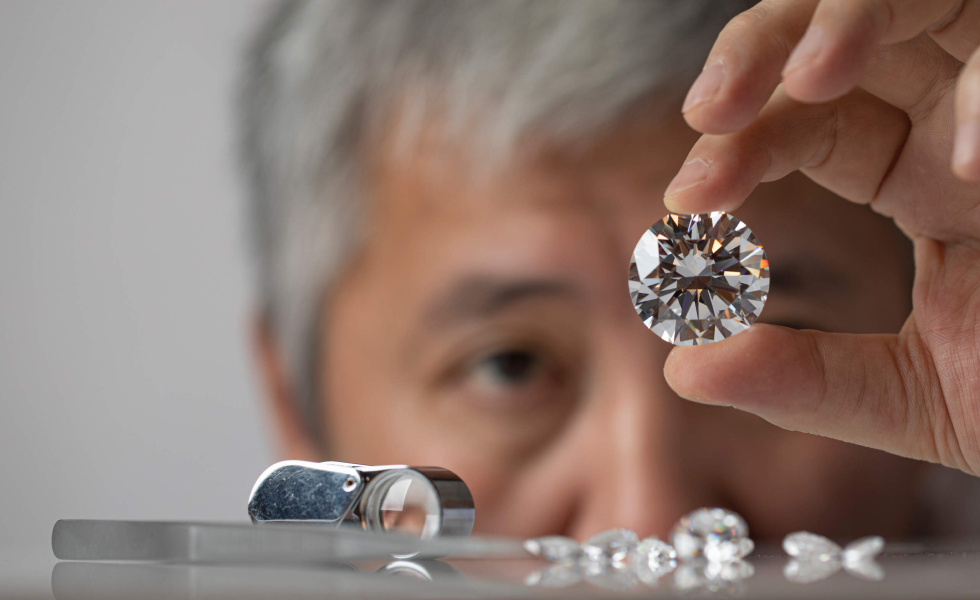Some Known Facts About Lab Grown Diamonds.
Wiki Article
The Only Guide to Lab Grown Diamonds
Table of ContentsLab Grown Diamonds Fundamentals Explained7 Easy Facts About Lab Grown Diamonds DescribedThe 3-Minute Rule for Lab Grown DiamondsOur Lab Grown Diamonds Statements
As you take a trip closer to the Earth's core, pressure and temperature level rise, which develops the best stove for carbon to be converted into ruby (diamonds are the only gemstone to be made from simply one component). Via an enormous volcanic eruption, these rubies were transported to the Earth's surface. It's estimated this process was relatively fast (more than likely throughout several hours), which enabled the diamonds to stay intact without melting.The short response: carats determine the mass of rocks, karats determine the pureness of gold. Carat weight: 1 carat weight is equivalent to 0.2 grams, concerning the weight of a paperclip (following time you see an image of Mariah Carey's 35 carat weight involvement ring, simply visualize the burden of carrying 35 paper clips around your finger every day).

Below are some of the essential benefits of laboratory grown diamonds and lab grown up ruby jewellery:.
A Biased View of Lab Grown Diamonds
Place merely, all-natural or earth-mined rubies are crafted over numerous years beneath the Earth's crust from pure carbon combined with pressure and heat. Creating diamonds in a lab requires the same procedure, just fine-tuned to happen over a much smaller timespan in a much more regulated setup.Whereas earth-mined rubies are uncommon and limited and often tend to raise in rate over time, lab diamonds are conveniently offered. As demand increases, labs can proceed to create laboratory diamonds meaning they are not limited or limited contrasted to natural diamonds. If you're interested in great precious jewelry from a financial investment perspective, like lab-grown diamond rings, they will not be a great fit for your needs.
They may think that the disadvantages of lab-grown rubies exceed the pros. Some could suggest that, for this factor, getting a lab-made diamond likewise comes with its ethical factors to consider, as doing so takes income away from those entailed in the natural ruby industry who might need it most.
Standard diamonds count on the Planet's problems to establish their high quality or absence thereof. But in a laboratory, manufacturers can directly regulate a ruby's top quality. Yes, there are moral and ecological factors to consider with both extracted and manufactured rubies. Expect your spending plan just permits you to purchase certain colors or cuts of all-natural diamonds.
6 Easy Facts About Lab Grown Diamonds Shown
You can quickly find colored, manufactured diamonds on the (relatively) affordable side as well as details cuts that would be pricier if you were going shopping for a mined ruby only. That barely means it isn't worth shielding.all-natural rubies is that the latter is extracted from natural deposits in the Earth while the previous is made in a lab utilizing controlled settings. But their high quality is greatly the very same. Lab Grown Diamonds. While the distinction between lab-grown and all-natural ruby options are very little when it comes to quality, a few of the disadvantages of lab-grown rubies consist of the fact that the rock will depreciate in time and, to some, a lack of nostalgic value that's typically connected with extracted rubies
This read review cost difference can be associated to the structured manufacturing process and the avoidance of expenditures connected with traditional mining. The Controlled Environment in Which Laboratory Grown Diamonds Are Created Allows for Regular High Quality.
Convenience in Design - Lab Grown Diamonds Deal Designers and Consumers a Versatile Palette to Create Special and Ingenious Precious Jewelry Styles. the Controlled Development Refine Permits The Manufacturing of Diamonds in Numerous Shapes and Sizes. Lab Ruby Rings are one of the most Famous Amongst Laboratory Diamond Precious Jewelry. Lab Diamonds Commonly Feature An Even More Clear Supply Chain.
Unknown Facts About Lab Grown Diamonds
Market Perception - Despite Their The Same Physical Characteristics, Laboratory Diamonds May Face Challenges in Market Perception. Some Customers Still Perceive Natural Diamonds as Having Greater Worth and Eminence. The Production of Lab-Grown Diamonds Can Be Energy-Intensive, Particularly in Methods Like High Pressure Heat (hpht) and Chemical Vapor Deposition (cvd).All-natural Diamonds Are Formed Over Millions of Years Deep Within the Planet, Contributing to Their Regarded Rarity. Lab-Grown Diamonds, In Spite Of Their Identical Residence, May Not Lug the Same Rarity Factor, Affecting Their Perceived Worth for Some Customers. Effect On Diamond-Dependent Economic Situations - the Shift In The Direction Of Lab Grown Diamonds May Have Economic Effects for Countries and Areas that Rely On The Ruby Mining Industry.

Laboratory Rubies Are of Equal High Quality to Natural Diamonds in Terms see this here of Hardness, Brilliance, and Clarity - Lab Grown Diamonds. Yes, Laboratory Diamonds Sparkle Just Like Natural Diamonds. Their Sparkle and Shimmer Are an Outcome of Their Cut and The Method Light Connects with Their Aspects.
Report this wiki page